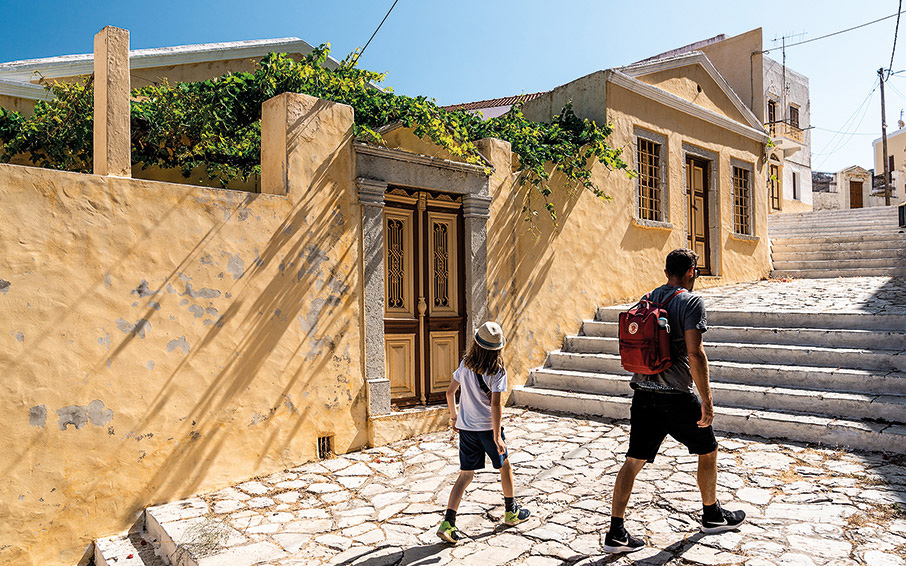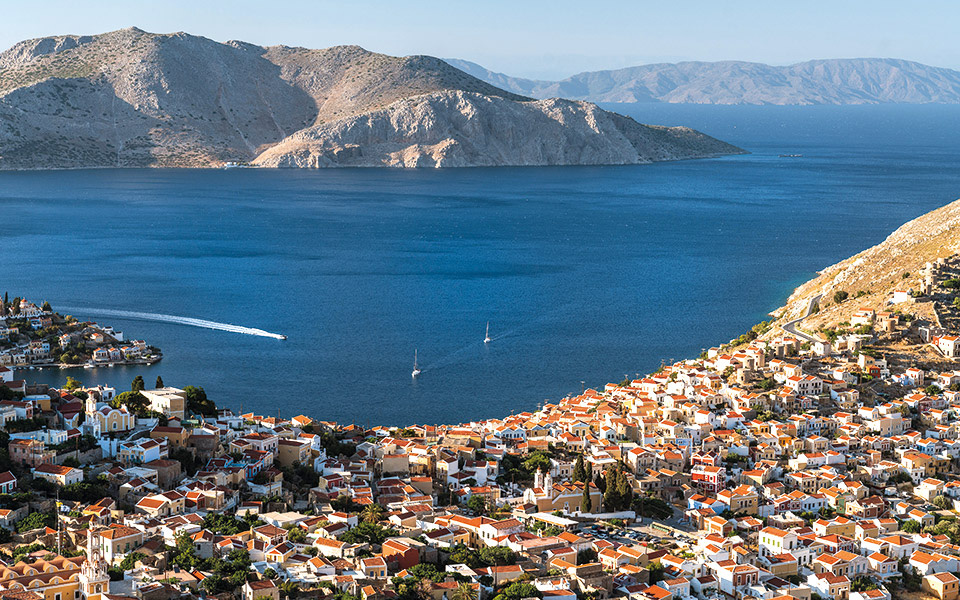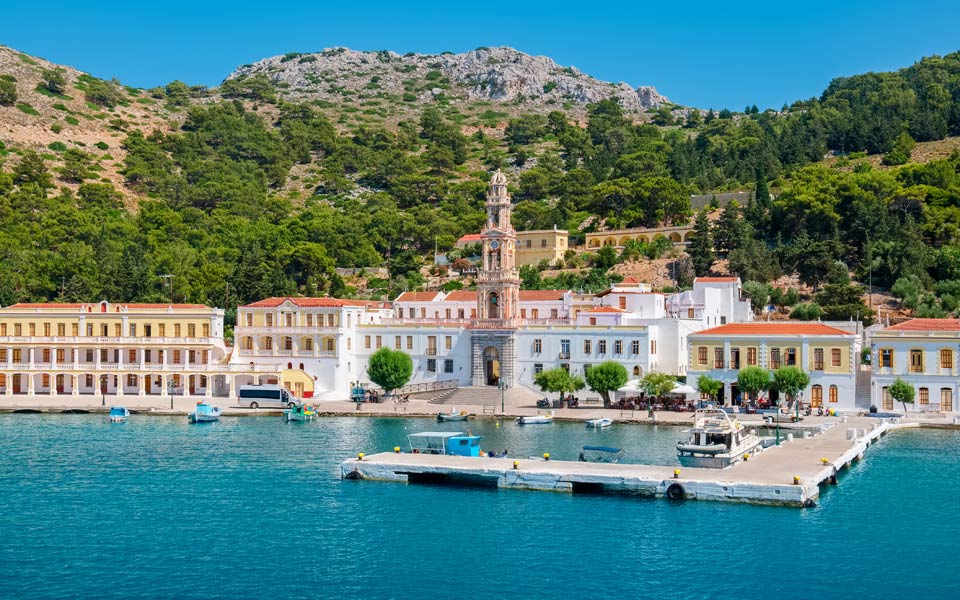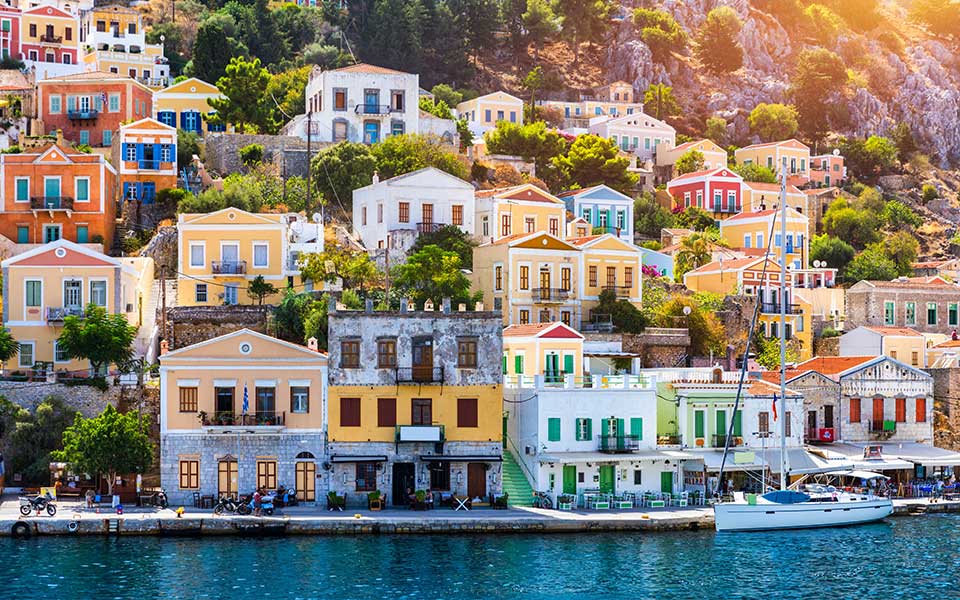National Geographic Traveller (UK) is shining a light on the small Dodecanese island of Symi, Greece’s best-kept secret, as the next frontier for hiking enthusiasts.
A recent article has lauded “pint-sized” Symi for its forested interior, old donkey trails, and resilient, resourceful locals, promising a hiking experience unlike any other in the Mediterranean.
Capturing the essence of Symi’s allure, the National Geographic article transports readers to the heart of this enchanting island, guided by the indomitable spirit of its inhabitants. At the helm of this exploration is Valantis Makrakis, a local luminary and employee of Nireus Hotel, whose intimate knowledge of the Symi’s hidden gems is unparalleled.
From the cobblestone streets of Symi town, famed for its picturesque neoclassical buildings that line the bay, to the tranquil alleys of Horio, Valantis leads readers on a voyage of self-discovery and exploration.

© Nicholas Mastoras
Tight-knit community
In the northern part of Symi, the town is divided into the bustling seafront of Gialos, adorned with restaurants and shops catering to day-trippers from nearby Rhodes, and the quieter residential area of Horio nestled on the hillside. Connected by the iconic Kali Strata, a stairway boasting around 400 steps, Valantis guides us through this picturesque setting.
Pausing to catch his breath, he reflects on the community spirit that has endured despite the island’s tumultuous history. With remnants of wartime destruction juxtaposed against meticulously maintained houses, Symi bears the scars of its past resilience. “The town was bombed to near-destruction in the Second World War, and the population never quite recovered from the subsequent exodus: of the 22,000 residents who lived here, some 3,000 remain,” the article notes.
Valantis opines the tight-knit community on the island, especially in low season: “We have one doctor, there are only two passenger ferries a week in winter. It can be a difficult island,” he says, adding that locals have learned to become self-reliant.
Leading the author to the remnants of the 14th-century fortress, known as the Kastro, Valantis unveils a panoramic view of Symi’s expansive bay below.

© Nicholas Mastoras
Donkey trails
Suggesting a shortcut back to Gialos, Valantis unveils a centuries-old path once traversed by donkeys laden with cargo. “Donkeys used to carry loads up this road,” he says, “but now we have bikes, and cars.”
Prior to the construction of the first paved road in the 1960s, these time-worn pathways, once lifelines for the island’s inhabitants, now beckon intrepid adventurers to uncover their secrets and stories amid Symi’s forested interior. “Donkey trails like this have fallen into disuse all around Symi,” the article writes.
Driving to the island’s west coast, in search of the 18th-century monastery of Megalos Sotiris, Valantis encounters Manolis Petridis, a former waiter dedicated to preserving Symi’s cultural heritage. Through his tireless efforts, historic features, including pebble mosaics and stone arches, are lovingly restored.

© Shutterstock
Island of miracles
A hiking enthusiast, Valantis is busily mapping the island’s routes in a bid to one day create better access for tourists. “There are no signposts other than marks on stones, and with no trail maps available, travellers may never even know these paths exist,” the article continues.
Arriving in Panormitis via the paved road, the serene settlement is centered around the majestic Holy Monastery of the Archangel Michael, standing proudly against the backdrop of the coast. As day-tripper ferries dock nearby, crowds begin to gather, drawn to the monastery’s revered presence.
Stepping into the tranquil sanctuary of the single-aisle church, the article describes how visitors reverently pay homage to the silver-plated figure of the Archangel Michael. According to local tradition, this sacred icon is said to have appeared miraculously centuries ago, solidifying the monastery’s status as one of the most esteemed holy sites in the Dodecanese.
Yet, the monastery’s significance extends beyond its devout followers, evident in the treasures housed within its walls. A modest museum showcases a wealth of religious artifacts, including wooden boxes, messages in bottles, and intricately crafted vessels adorned with seashells — testaments to the enduring faith and reverence of Symi’s inhabitants.
Over coffee at Panormitis’s quaint cafe, owned by Mihalis Tsauselis, who also serves as Symi’s deputy mayor, Valantis shares tales of miraculous discoveries: “I found one, too — a message in a bottle, asking whoever came upon it to light three candles here,” he says.
From messages in bottles invoking divine intervention to the unwavering belief in the power of faith, it becomes clear that on this resilient island of rubble and rebirth, miracles are not only embraced but woven into the fabric of daily life. In the face of adversity, Symi’s community proves that the greatest miracles are often found within themselves — a testament to the enduring spirit of this remarkable island.












